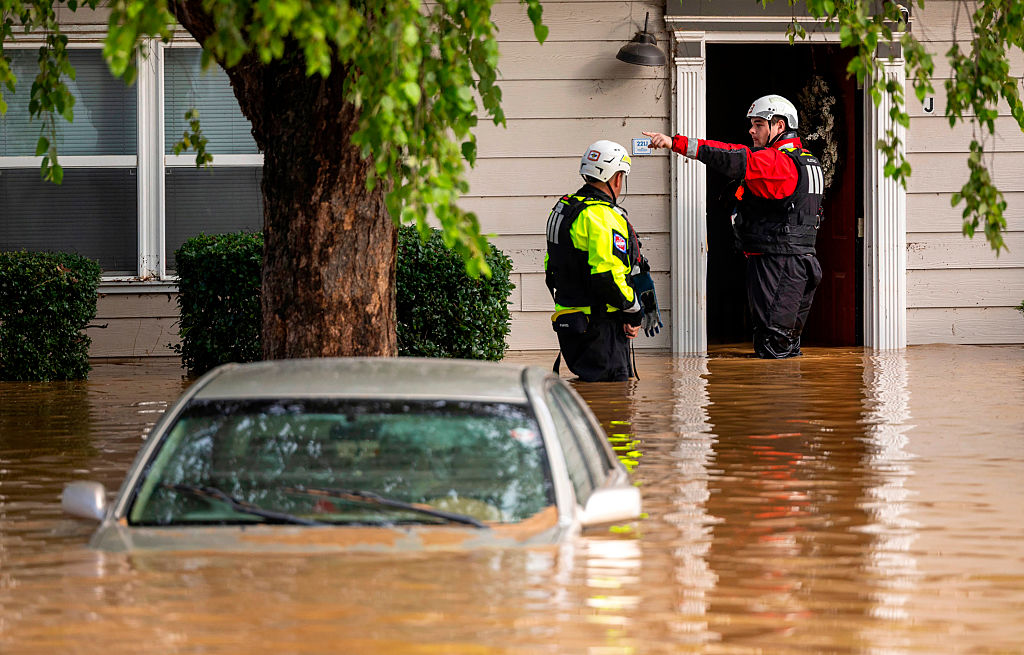From Louisiana to Ohio, large swaths of the United States are expected to see heavy rainfall and potential flooding into next week, on the heels of deadly floods in Texas and New Jersey this month. Rescue efforts remain ongoing in central Texas, with around 100 people still missing in the aftermath of the devastating July 4 flood.
[time-brightcove not-tgx=”true”]
Flooding is only expected to become more common, as climate change increases the frequency and intensity of storms. Rain storms are dropping more water in shorter periods of time, ripening the conditions for flooding.
Read More: Why Flash Flooding Is Getting Worse Across the U.S. and How to Stay Safe
It’s important to be aware of what risks you might face and how to prepare for them ahead of time. Here’s how to know if you’re living in a flood risk zone.
How flood risk is determined
The most well-known flood mapping tool is FEMA’s 100-year flood risk model, which maps out areas that have a 1% chance of flooding in any given year. “The flood risk from the 100 year event really sets the standard for flood plain management across a lot of the U.S.,” says Katy Serafin, assistant professor in the department of geography at the University of Florida.
But FEMA’s flood maps, experts say, are outdated. Climate change is fueling more intense rainstorms as more water evaporates and is held in the atmosphere—but the maps tend to focus on historical data rather than looking forward. “Not all maps take into account the changes that we’re seeing to potentially storm intensity, sea levels in coastal areas and so on,” says Serafin. “And some of those things are changing rather rapidly.”
Read more: Why ‘Hundred-Year’ Weather Events Are Happening More Than Once Every 100 Years
Urban areas tend to see flash flooding when more rain falls than can be soaked into the ground, overwhelming drainage systems, while a lack of vegetation, often due to increased urban development, is leaving more and more areas vulnerable to flooding.
How to know your flood risk
The easiest way to know your flood risk is to enter your address into the FEMA flood map service center. The map will tell you if you’re in a federally designated flood zone.
If you own your home, you should already be aware if you’re in a flood zone—banks require homeowners in those areas to get flood insurance through FEMA before approving a mortgage.
If you’re not in a federally designated flood zone, that doesn’t mean you’re in the clear—especially since the maps rely on historical data. “Sometimes we like to look at these lines on maps and think that they are very strong determinants—like flooding won’t happen here because I’m on the other side of this line, but that’s not necessarily true,” says Brett Sanders, professor of civil and environmental engineering and urban planning and public policy at the University of California, Irvine. “It communicates this binary situation where either you’re at risk or you’re not at risk. The reality is that there’s a variety of gradual variation in risk across the land surface.”
In fact, insurance claim data shows that many flood loss claims that are made to insurance companies often fall outside of map hazard zones, says Sanders.
Some local governments offer interactive flood tools as well, and private companies are also working to fill in the gaps. The company First Street has created their own model to assess flood risks, and is partnering with the real estate websites Redfin and Zillow to show homebuyers climate risk information.
What to do if you’re in a flood zone
Consider what risks you might be vulnerable to in your region, whether it’s heavy rainfall or a storm surge, and have a plan in place if you begin to see the signs.
“Be more aware of those risks, and the triggers of those risks, whether it’s rainfall or stream flow, or storm surge, so that [you] can make sure that the people staying on [your] property are safe,” says Sanders.
As our climate changes, it’s only going to become more important to understand and prepare for the impacts. “Just be aware that [any] house has the potential [for] flood risk,” says Zhi Li, incoming assistant professor at the University of Colorado Boulder. “If you’re not in a [federal] flood zone, that doesn’t mean your house is not flood prone.”

